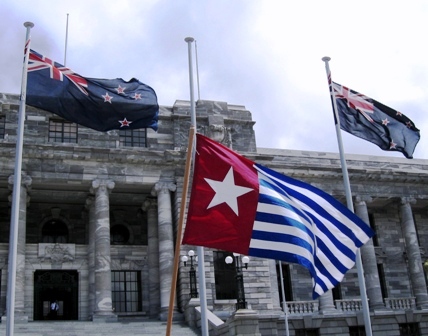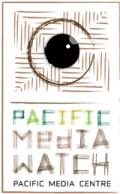
Anita Rachman
JAKARTA (Jakarta Globe/Pacific Media Watch): Eighty percent of Papuans live in the approximately 3000 kampongs spread across the country’s largest province, so any meaningful understanding of how Papuans live must start at the village level.
That was the reasoning that inspired a group of journalists from the Voice of Papuan Women Tabloid (TSPP) to travel from village to village for more than two years. They talked to people and looked at the facilities and infrastructure, which the TSPP’s editor-in-chief, Angela Flassy, says remains predictably underdeveloped.
Their findings from 34 villages, initially published weekly in the TSPP, were first collected into a book in 2009, From Village to Village: The Journalistic Journey of the Voice of Papuan Women Tabloid.
Now a second book covering 13 villages is set to hit shelves.
Health shortages
Paskalis Keagop, a senior editor at TSPP, says the team of eight journalists checked on basic infrastructure such as “schools, puskesmas [community health centers], roads, bridges and markets. We also visited two mining areas".
He adds that in the 47 villages visited so far, “the conditions are generally the same".
“Education and health, these are the basic services that people need but that are lacking in general,” he says.
He cites Wambes village, where residents have to rely on rainwater because of a lack of potable water sources.
According to the account in the book, Frans Abar, the village chief, said that in 2008 the provincial public works office drilled a well to provide a reliable water source, as well as a reservoir to store the water — only the officials never handed the keys to the well or reservoir to the village residents. No one in Wambes was involved in the process.
Abar said it was difficult to find clean water in the area, especially during the dry season, forcing residents to resort to “living from rainwater".
Over in Puay village, the book tells of a shortage of a different sort: of teachers, doctors and nurses. The village has only one school, a state elementary school. Even then, the students can count themselves lucky if teachers show up three days a week.
Towns preferred
“Teachers don’t want to live in the village. They prefer to say in towns,” said Belsazar Doyapo, the village head.
Puay also has a high number of malaria, tuberculosis and skin disease cases, caused mostly by the consumption of dirty water drawn from Lake Setani. But there are no doctors or nurses at the local health centre.
For treatment, residents have to take a two-hour boat ride to the nearest clinic.
Paskalis says many other villages are in dire need of better education and health care.
In a vocational school at a village in Sarmi district, for instance, many students have difficulty reading, he says.
Flassy says there are more schools being built across Papua, but few teachers are willing to accept what is widely seen as a hardship posting, and there are not enough books to go around.
“It’s probably not a new story for you, but what can we say? The conditions five years ago, the conditions today and the conditions in the next five years won’t change, I don’t think,” she says.
Lack of government
She points out that in Wambes, the local administration built a library, but the provincial administration did not supply it with any books, magazines or even newspapers. When Paskalis visited the village, he found the library had been overrun by a herd of goats.
But Flassy says she disagrees with the idea that the people of Papua live in poverty.
“Because we don’t. Just look at our natural resources wealth,” she says. “The problem is that despite the presence of the government, we don’t feel that it’s actually governing.”
The TSPP team says it has many more villages to visit. It adds that it has no ulterior motive for publishing the books, but is simply sharing Papuans’ stories with the rest of the country.
“The government might see it as criticism,” says Yakobus Wally, a TSPP reporter. “But we don’t actually criticise them. We’re simply describing the reality on the ground.”
(cc) Creative Commons



